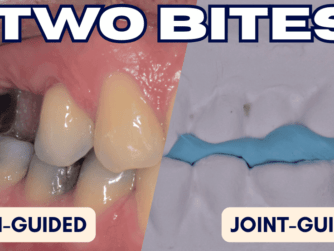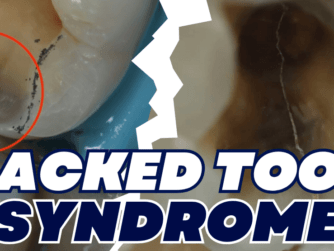Podcast: Play in new window | Download (Duration: 48:19 — 68.8MB)
Subscribe: RSS
Get ready for the best summary of bridges you ever heard, including diving deep in to this mystical design of bridgework called ‘fixed-movable’ bridge.
You cannot search about Bridge Design on Google without landing on the great content that Prof Paul Tipton has released.
Protrusive Dental Pearl: where to place your grooves for crowns and bridges?
Crowns: place grooves mesial or distal, or mesial AND distal. Ideally in tooth and not in core material (we elaborate in the episode). Why mesial and distal for crowns and bridges? The forces will be transmitted bucco-lingually on a crown – therefore grooves perpendicular to this force vector to resist it would be mesial/distal.
How about for bridges then?
For conventional bridges the grooves are placed buccal or lingual, or buccal AND lingual.
This is because the forces are now acting antero-posteriorly on the bridge via forces on the pontic(s). The buccal/lingual grooves will resist antero-posterior forces.
Prof Tipton and I discuss:
- The benefits of fixed-movable bridges (such as negating the need for parallel preps of abutments)
- The contraindications of Fixed-Moveable bridges (such mobility of abutments)
- Why fixed-moveable bridges should be the default design
- Myth-busting Ante’s law
- What is the maximum span of fixed-moveable bridgework?
- What are the rules that govern cantilever bridges?
- what about mesial cantilever vs distal cantilever? Why is Distal cantilever worse, and is there any evidence to back this up?
- The steps in planning for Bridges: 1. Design anterior bridgework first 2. Choose your abutment teeth 3. What Design? (F-F, F-M, Cantilever?) and 4. Type of retainers for the abutments (Adhesive retainer, conventional crown, onlay etc)
- We discuss an actual case and live planning for a Fixed-Movable bridge
- Where is the fixed-movable attachment housed? Anterior or posterior? Inside the abutment or outside of it?
- The one thing you must do when placing Fixed-moveable bridges or you would have wasted the time and effort:
Remove a small portion of the male component – about 0.25mm on average
If you enjoyed this episode, you will like the complete denture tips given by Dr Mark Bishop – check it out!
To learn more about Tipton Training, check out their website for courses.







